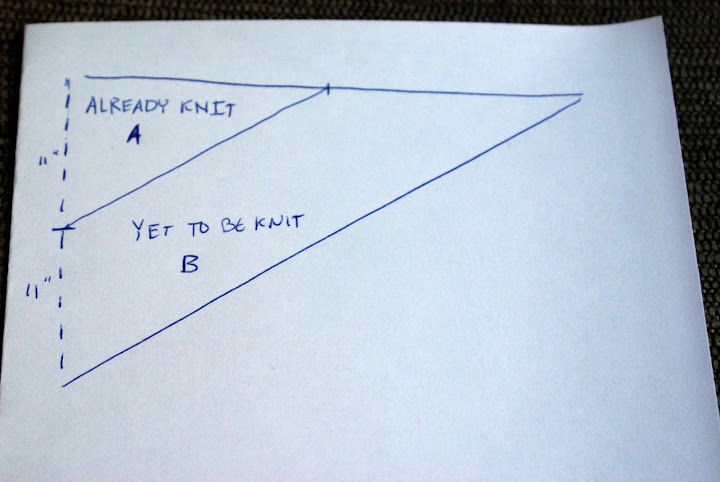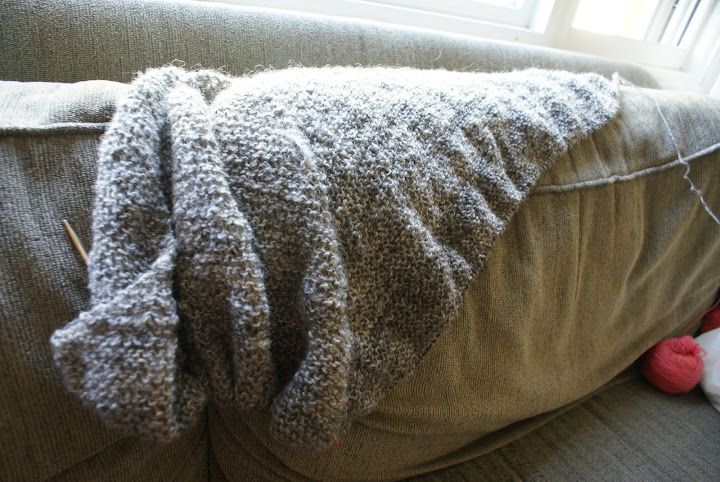I haven’t been getting as much knitting done while watching the olympics as I’d like, because I keep getting distracted. Wikipedia is always open in a little window above the streaming live feed, as I look up different styles of wrestling, or the scoring systems for show jumping or archery or indoor cycling, or the history of synchronized diving, or what on earth “stoppage time” and “handball” are, or what events are in the heptathalon or the omnium. Additionally, I’m paying close attention to the techniques used in sports I know nothing about, trying to learn what different water polo plays are or what composes in a high scoring floor exercise. I’m riveted.
What’s most intriguing is studying the wide variety of body types and skills required for different sports. Which sports require you to be enormously beefy, or short but muscular, or tiny but dextrous? In which sports does it not matter at all, or do certain traits give you an advantage, but not a make-or-break one? Which sports require the most balance, finesse, ridiculous hand-eye coordination, a splash of luck? In some sports, it helps if you are tall and can jump high, but you can compensate in other ways. And of course all these athletes are prone to different types of injuries.
This has got me thinking: what sort of morphology shows up in the most intense knitters? We all end up with pretty darn dextrous hands, and are prone to every kind of upper-body RSI, especially carpal tunnel. Spinners probably end up with killer hamstrings. We’d all probably profit by cross-training with some bench presses, since we use our arms and upper backs so much. I for one have a horrible slouch.
There are some mental affinities, too, though they aren’t as required. This is a “sport” in which help is always available, and you can find a good coach to answer your questions. But if you want to advance on your own, or become one of those coaches, you’ll be helped by an ability to observe details closely, a keen sense of spacial logic, and a bit of math – mostly algebra (solving for proportions, really) and the occasional fit of geometry.
I hated geometry in high school. All those theorems and proofs – it seemed so arbitrary. I was pretty bright; I could look at a graph and see clear as day whether this line was longer than that line, or twice as long, or whatever. But to prove it properly drove me bonkers – partly because I graded my own homework (homeschooled!), was brutally honest, and if my answers didn’t match up precisely, I had to mark myself down just because I knew something in my head instead of writing out every mind-numbingly obvious step by hand. But hate as I might, this week, I am at geometry’s mercy.

As of Monday night, I had gotten through the smallest of my three skeins. I wanted to get a sense for whether I had enough yarn, so I did some simple geometry. The piece was (without stretching) exactly half the length and width of the target size (22″ long, 66″ wide). That first little skein, at about 130 yards, was about 1/4 of the total yardage I’d spun. Above, you see the amount I had knit superimposed on the target size.
So I engaged in some simple geometry. I drew a few lines, dividing the “still to be knit” portion into triangles the same size as what I’d knit so far. Because B2 has the same hypotenuse as A and the same angles, I know it’s identical to A. The same is true for B1 and B3.

So I was spot on, exactly. It might be a near thing, but with 3/4 of the yarn left, I was pretty confident that I had 3/4 of the knitting to go.

Now that I’m nearly through the second skein, checking my progress has gotten a little trickier. I’ve used 320 yards, leaving about 180 yards, or 36% of the yarn left. The shawl is a solid 18″ deep.

I couldn’t do anything so simple as my first exercise, but that inspired me to do another fit-the-smaller-triangles dealie. I drew a straight line across from the 4″-from-the-bottom point, and called this little triangle “C”. I then filled the rest of these two spaces with triangles of the same size, using the known height of the center of the shawl to make sure I had the correct #.

I fit exactly 10 of “C” into the “yet to be knit” portion, and 20.5 in the “already knit” portion. (The small rectangles at the top are equal to “C”; this isn’t geometry class so I don’t have to proof it out for you.)
This means that the “yet to be knit” portion is 33% of the knitting. So with 36% of the yarn left, I should be golden.
So it is with pleasure that I award myself the gold in the handspun heptathalon, since I’ve completed enough to finish my shawl. I think I originally said I’d spin the whole half a fleece, but that’d be way more than I’d need, not to mention tedious. My real goal was to spin and knit a thing during the olympics, and I can safely say the spinning leg of this diathalon is done. Woohoo!

LOL! Wow, Rebecca… You may not believe this, but the actual MATH is easier! That said, I really must award you a few bonus points for style! (…and style points factor in quite heavily in the “sport” of knitting…) 😉
LikeLike
Lol! I guess I could have just calculated areas and compared now that I think of it. It honestly didn’t occur to me x.x
LikeLike
Blame it on pregnancy brain!
LikeLike